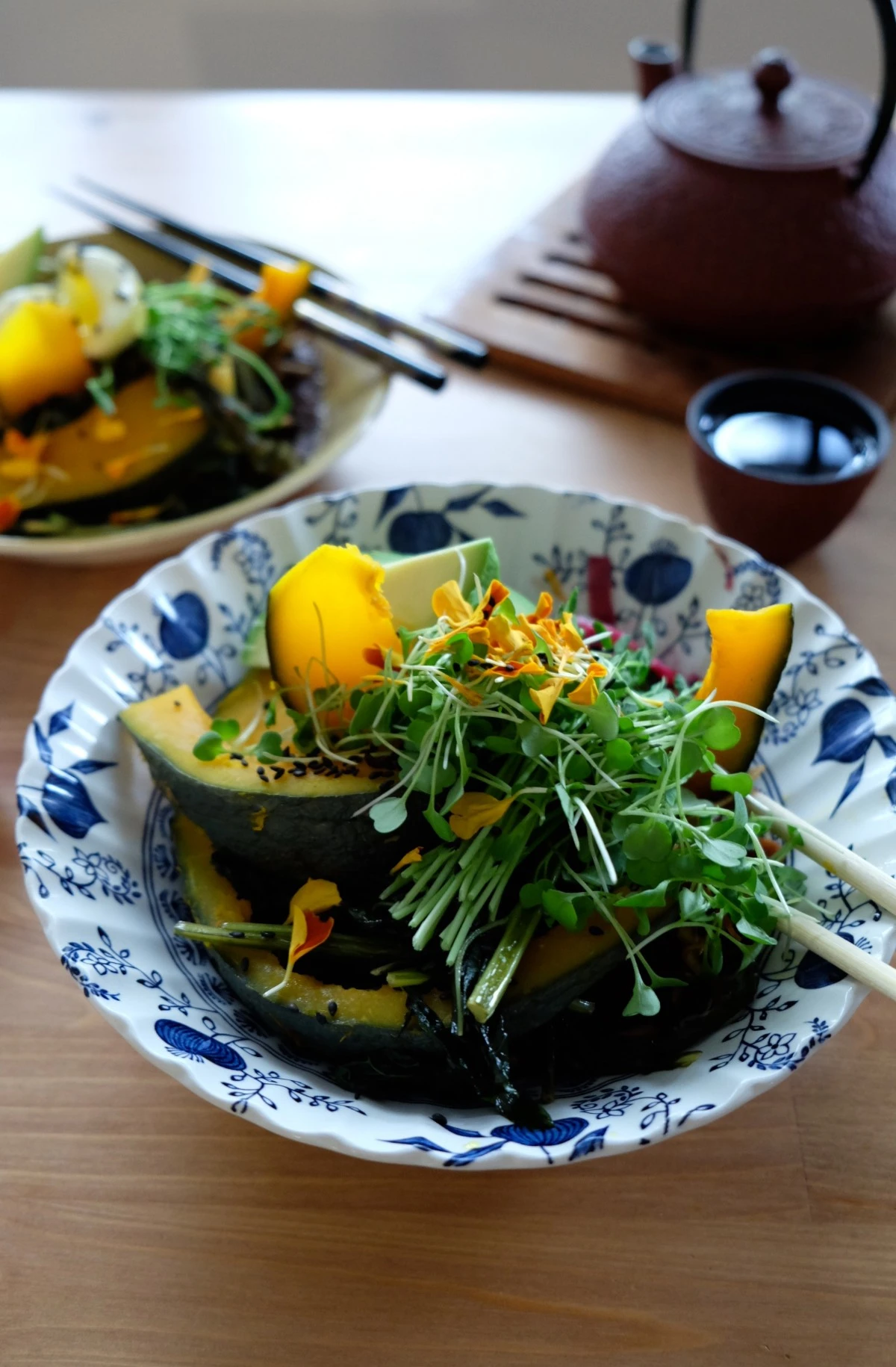the balanced bowl
The Balanced Bowl: Creating Balance and Supporting your Body
During a Stressful Season
Truth – This year is off to a rough start. The mantra of the moment, “the best is yet to come”, may be playing on repeat in our brains, and even though we are well into February, it feels like many of our healthy New Year’s Resolutions are still on the back burner (no pun intended). It’s times like these, though, that we require a little more TLC. We find it easier to cave into those once in a blue moon comfort foods to provide that temporary buzz. But it’s stressful times like these, when we should be taking better care of ourselves, investing more into our health and diets, and balancing our plates with healthy foods that nourish and do more than simply provide calories.
Personally, “the bowl” is my comfort food. Filled with different textures, flavors, and various seasonal vegetables and a grain, it satisfies cravings while providing a nourishing and grounding meal.
When it comes to clean, wholesome foods, the key is in the pure unadulterated ingredients. Inspired by Traditional Chinese Medicine, the Five Phases or elements, and the fundamentals of macrobiotics, this balanced bowl reinvents our obsession with comfort food.
Each of the five Earthly elements are represented, creating a balanced and nourishing plate that reduces craving, keeps you sated, and provides a wide spectrum of bio-available nutrients as well as probiotics. You’ll feel grounded, energized, and full longer. Because these recipes use only pure, unprocessed ingredients, prepared using the necessary steps in order for your body to absorb their nutrients (such as sprouting and fermentation), your body will digest them efficiently and with ease – meaning, no bloat, indigestion, or cravings, providing a juice-free detox.
These elements, though they correspond directly to particular flavors, get more complex in how they correspond to different organs as well as energies of different plants, animals, and even the particular part of the plant that is used and how it they are prepared and/or cooked. To simplify, listed below are the five elements and their corresponding flavors, the organs and emotions they correspond with, and a few ingredients that are promote that particular element. It is said each meal should contain one component of each element to be balanced. More so, cravings may be linked with either an element lacking in the diet, or even an emotion or element that is too strong or deficient. We are happy to do the heavy lifting when it comes to building a box that represents each element fully, but to make life easy, we we recommend eating a wide variety of flavors, textures and colors when it comes to fresh produce. We can help with this too.

The Five Elements Explained
Wood:
Flavor – Sour, Acid
Organs – Liver, Gallbladder
Emotion – Anger
Supporting Ingredients – lentils, mung beans, broccoli, carrots, sprouts, yogurt, vinegar, lemon, lime, sauerkraut, olives, chicken
Fire:
Flavor – Bitter
Organs – Heart and Small Intestines
Emotion – Joy
Supporting Ingredients – corn, amaranth, asparagus, brussel sprouts, chives, dandelion greens, raspberries, coffee, wine, shrimp, cacao
Earth:
Flavor – Sweet
Organs – Stomach, Spleen, Pancreas
Emotion – Sympathy, Worry
Supporting Ingredients – Millet, sweet potato, winter squash, chard, collard greens, eggplant, apples, bananas, dates, honey, sweeteners
Water:
Flavor – Salty
Organs – Kidney, Bladder
Emotion – Willpower, Fear
Supporting Ingredients – Buckwheat, aduki beans, beets, burdock, dulse and seaweeds, sesame seeds, grapes, miso, tamari
Metal:
Flavor – Pungent, hot
Organs – Lungs, Large Intestine
Emotion – Grief
Supporting Ingredients – Rice, soy, cabbage, cucumber, daikon, garlic, ginger, mustard greens, onions, cinnamon, cheese, beef, spirulina, tofu
. . . . .
The Balanced Bowl
Serves 2-4
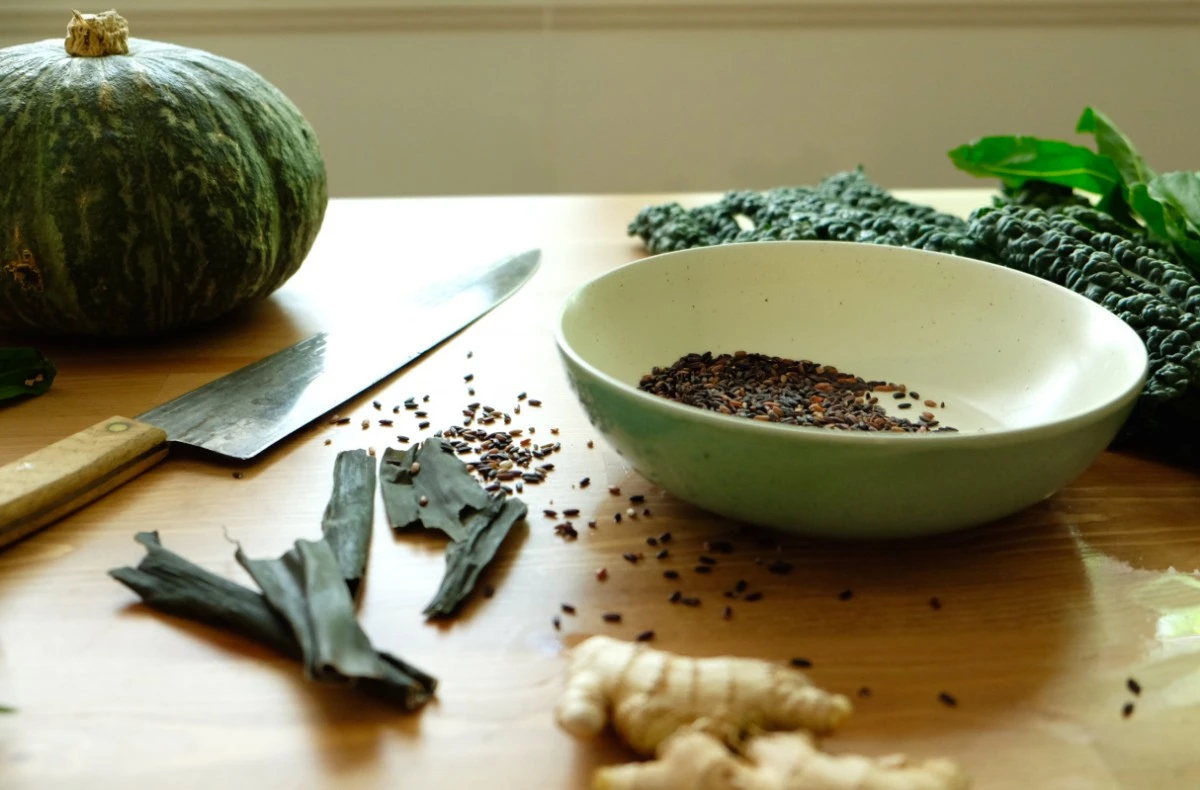
Emperor’s Black Rice (sweet/pungent)
2 cups black rice (soaked 8 hours for increased digestibility)
1 Tablespoon grated ginger
1 two inch piece of kombu seaweed (optional for trace mineral content and enhanced alkalinity)
1 ¾ cup water
Bring soaked and rinsed rice, ginger, and kombu to a boil. Cover and reduce heat to simmer for 30-40 minutes, until tender. Remove kombu before serving.
Kimchi (salty, pungent, sour)
You box will include Brassia and Brine, raw and organic kimchi to save on time. For more variations and instruction on how to make your own, check out Flora ex Machina’s take on classic kimchi- preserving-summer

Kimpira (salty, sour)
Kimpira refers to the cooking style of sautéing or simmering. Vegetables are cut into fine julienne or matchstick slices, seasoned, and simmered slowly allowing the vegetable to fully absorb the marinating juices. The result is a very tender texture and nourishing dish.
4 carrots
1 burdock root*
1 tablespoon sesame oil or toasted sesame oil
½ cup water
miso to taste – about 1 tablespoon diluted in a little water, or tamari (gluten-free soy sauce)
1 teaspoon sesame seeds (for garnish)
*If burdock cannot be found, substitute with broccoli stems, celery, celery root or cabbage.
Peel Burdock. Grate or thinly slice matchstick style. Add sesame oil to a warm saucepan to lightly coat pan. Add the burdock, carrots and other vegetables and salt and saute for a few minutes on a medium heat.
Turn heat down, add a little water and cook for 20 minutes or until tender.Add the diluted miso and cook 2-3 more minutes.
Sautéed Greens (water/earth/metal)
1 bunch of dandelion leaves, kale, or chard
1-2 cloves garlic, thinly sliced
1-2 tablespoons sesame oil
Himalayan salt, to taste
Fresh lemon juice to taste
Add sesame oil to medium heat, preheated pan. Add garlic and sauté until golden. Add in greens and mix to evenly coat oil. Cover with lid to wilt, and serve with salt and lemon to taste.
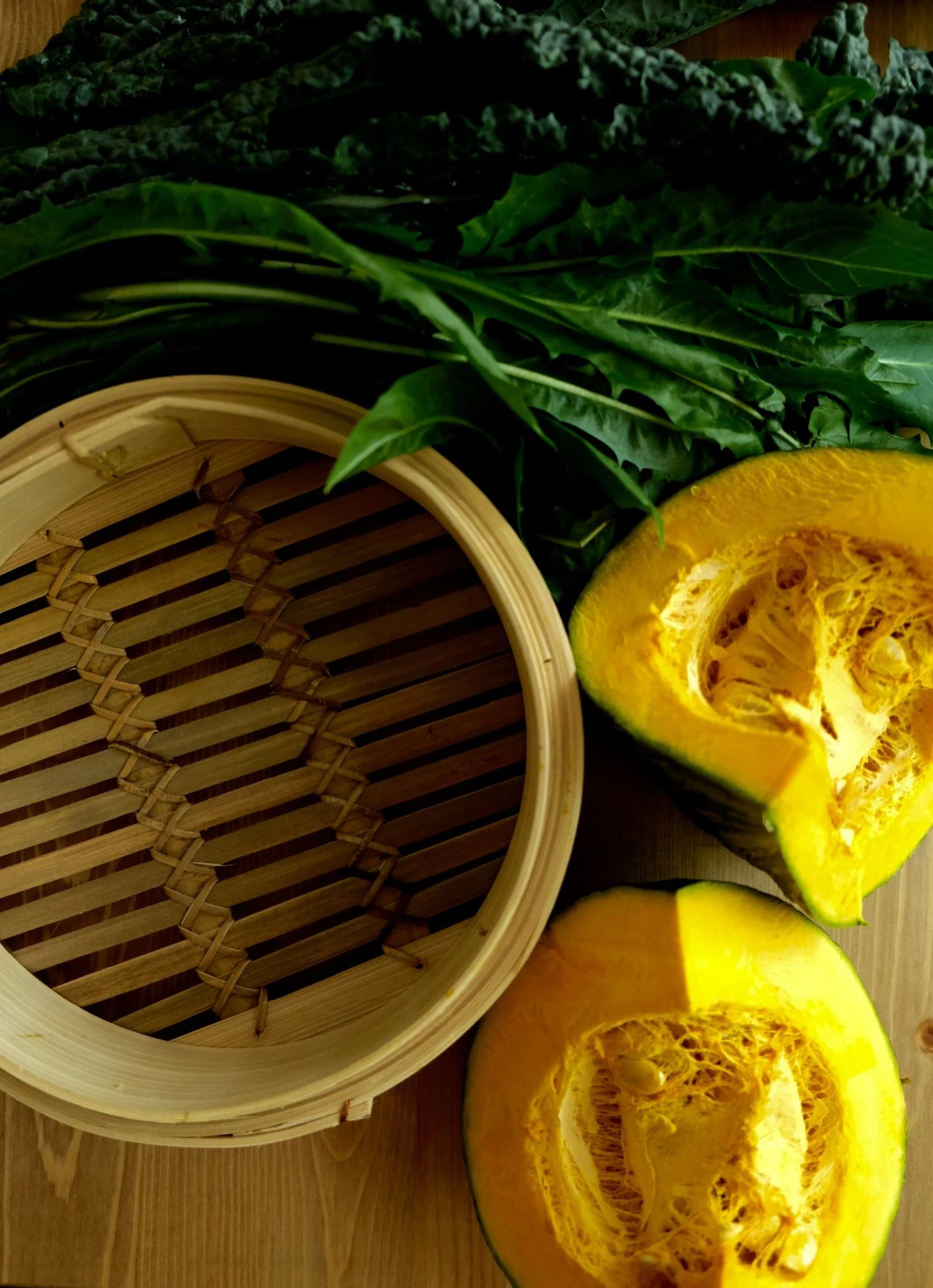
Kabocha Squash (sweet)
1 kabocha or other winter squash, deseeded and evenly sliced
Add kabocha to a steaming basket or steamer, and steam for approximately 10-15 minutes until tender and easily cut with a fork.
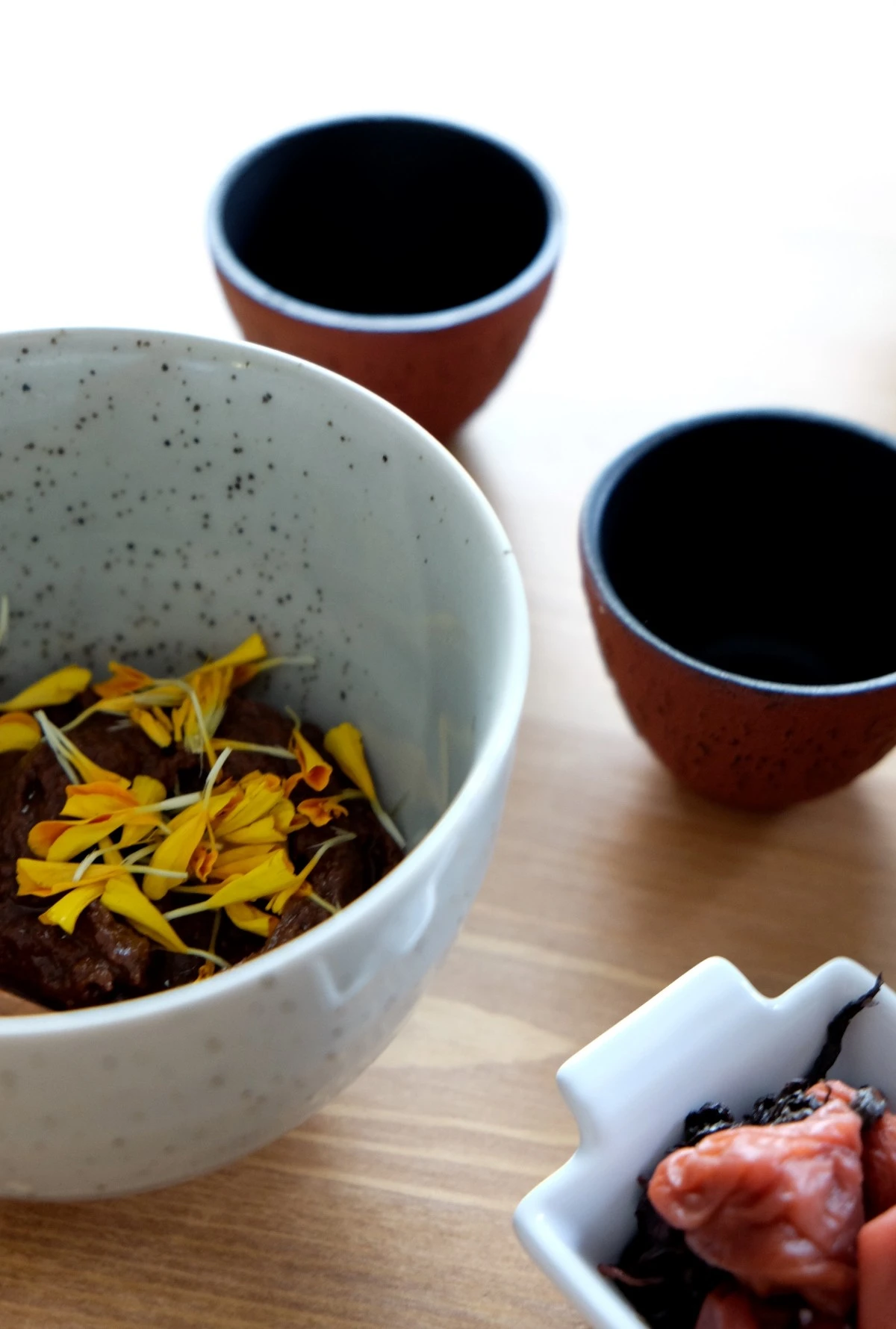
Miso/ Tahini/ Umeboshi Sauce (salty, sour)
The umeboshi plum is one of the most alkaline foods. It is incredibly astringent, a little sweet, salty, and sour. They are a specialty item and may be a little harder to source, but can also easily be omitted from the recipe.
6 tablespoons organic tahini
2-3 tablespoons red miso paste
1-2 preserved umeboshi plums (optional)
¼ cup kimchi brine
1 teaspoon honey (optional)
Blend all ingredients until smooth and creamy.
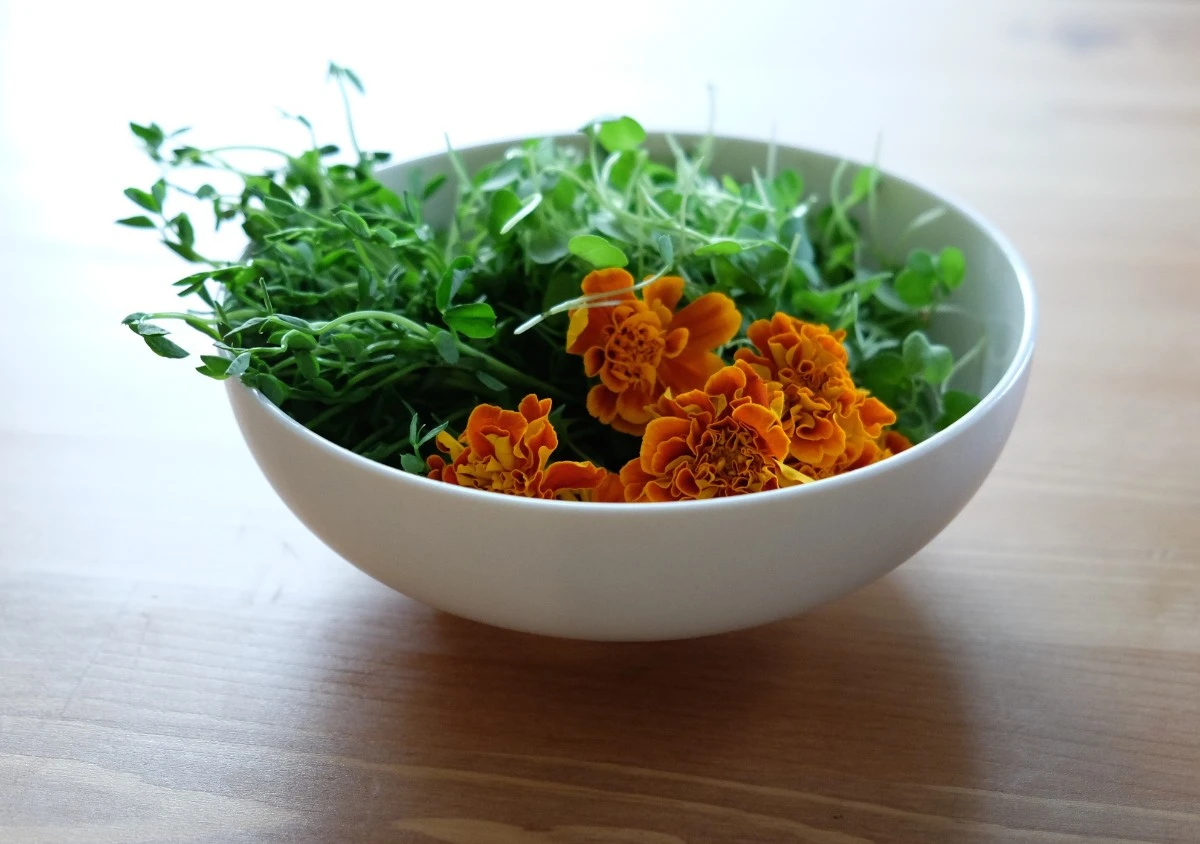
Additional Toppings
Sliced Avocado (sour)
Egg, soft boiled (generally sweet)
Assorted sprouts and edible flowers (varies)
Sesame seeds (salty)
Assembly
I personally like to start by bowls by laying a hearty serving of the miso tahini sauce as the base of the bowl. That way, every bit taken has a bit of each component. Next add your rice. Layer various vegetable components to your liking, and top with sliced avocado, a soft boiled egg, sprouts and/or edible flowers, and sesame seeds. Enjoy.

Ordering Instructions for The Balanced Box:
These hand-picked and curated kitchen boxes are delivered to your door weekly and provide you with all the essentials to cook the weekly recipes in your own home. Out of the Box Collective sources only the best sustainable and organic produce and products sourced from local and small business owners. They are infused with flavor, without sacrificing nutrition.
Head to Out of the Box Collective to order your balanced bowl and pantry staples boxes for everything you need to make your own at home. (Southern California – Los Angeles, San Diego, and Santa Barbara areas only)
